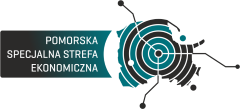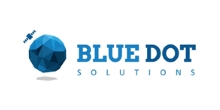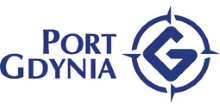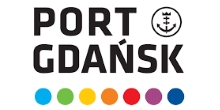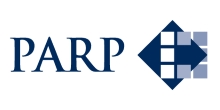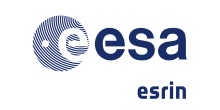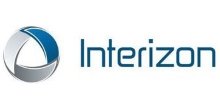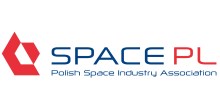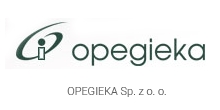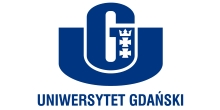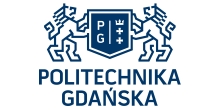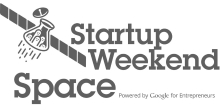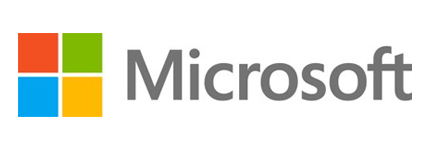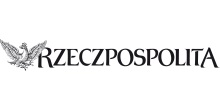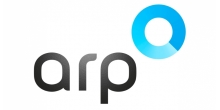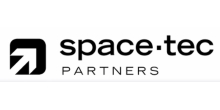Challenges for startups
Our partners are looking for solutions for some crucial problems. They not only would like to test your solutions but also to pay for them. Your chances for acceleration phase will grow if you help our partners with their pains.
Challenge 1: A detailed concept of a spatial information system for the terrain of the Port of Gdansk
Recipient of the solution: Port of Gdansk Authority
Desired action effect: A new GIS system powered by available data that is implementing solutions developed i.a. in Map Service. The purpose of the system is to obtain complete information about the real estate and company assets in port locations. Only an implementation for the entire port area will be taken into consideration.
Challenge 2: A system for monitoring technical condition of the quays of the Port of Gdansk
Recipient of the solution: Port of Gdansk Authority
Desired action effect: An automatic IoT system that measures and aggregates data on the technical conditions of port infrastructures (eg wall thickness, wall tightness, concrete quality).
Challenge 3: A system to holds records for water permits and cost analysis for specific areas in the Port of Gdansk
Recipient of the solution: Port of Gdansk Authority
Desired action effect: The goal of the project is to create a web-based platform that holds records of water-rights permits and that allows the creation of rainwater discharge data in the Port area.
Challenge 4: A guide application about port companies meant for external carriers
Recipient of the solution: Port of Gdansk Authority
Desired action effect: The challenge is to develop an application that would facilitate the access (directions) from the land to companies operating in the port area. The information would include, i.a. the locations of offices, warehouses and terminals with parking lots (including buffer) information. It would also include information about formalities required in given locations. The aim of this project is to improve traffic in the Port by facilitating the navigation and movement of drivers especially during their first visits.
Challenge 5: An augmented reality application for visitors of the Port of Gdansk
Recipient of the solution: Port of Gdansk Authority
Desired action effect: The goal of the project is to develop an application that allows real-time verification of descriptions, historical photos and visualizations in various locations of the Port of Gdansk. The aim of this project is to promote the Port in the form of a virtual, multilingual museum, covering the past, present and future of individual locations.
Challenge 6: A system that allows customers to connect with their Orange account using voice assistance (Siri, Google Assistant, etc.)
Recipient of the solution: Orange Poland
Desired action effect:
Challenge 7: A preventive software tool (AI based) that detects anomalies in services / bills
Recipient of the solution: Orange Poland
Desired action effect:
Challenge 8: A self-diagnostic application for mobile phones that analyses the quality of the network / connection
Recipient of the solution: Orange Poland
Desired action effect:
Challenge 9: A system that collects anonymous aggregate information (consistent with GDPR) on the behavior of users on the web
Recipient of the solution: Orange Poland
Desired action effect:
Challenge 10: A tool that collects, analyses and addresses data regarding single-client niches
Recipient of the solution: Orange Poland
Desired action effect:
Challenge 11: A System that allows managing the relationship with the whole household as a single customer
Recipient of the solution: Orange Poland
Desired action effect:
Challenge 12: Services for monetizing customer relations during telephone sales
Recipient of the solution: Orange Poland
Desired action effect:
Challenge 13: LTE-M communication modules for lighting control
Recipient of the solution: Orange Poland
Desired action effect:
Challenge 14: LTE-M communication modules for electric meters
Recipient of the solution: Orange Poland
Desired action effect:
Challenge 15: A system that measures heat loss during the transmission or measurement of energy emitted to the environment
Recipient of the solution: Orange Poland
Desired action effect:
Challenge 16: Water detection system based on wireless sensors that do not require a cellular network connection
Recipient of the solution: Olivia Business Centre
Desired action effect: Design and implementation of a system consisting of a set of maintenance-free measuring devices and an application layer that allows continuous monitoring of the conditions of rooms in terms of flooding detection over a very long period of time. The planned system must meet the following baseline requirements:
- introduce measuring devices that would be capable of trouble-free and maintenance-free operation for 10 to 15 years
- the designed devices must allow installation without the need to carry out calibration, maintenance and activities that require servicing, i.e. replacement or charging of the power source; it should also be effortless
- devices must use wireless connectivity to exchange information with the upper level of the system
- the designed solution for the application must contain the ability to save data regarding the activation of sensors and their states and to share this information in the form of system-level files (logs) with the possibility of browsing and viewing them
- automatic generation of alerts based on detected events
- optional visualization of rooms and floors where flooding was detected using a representative schematic view of a given building
- the possibility of integrating the designed system with the currently functioning BMS (Building Management System) solution
- ensuring cybernetic security, i.e. protecting the system against interference and unauthorized access by unauthorized persons
The proposed solution should meet the condition of being highly innovative, i.e. by taking into account within its architecture the latest solutions in the field of IoT technology, security, communication while minimizing energy consumption.
Challenge 17: Solutions integrating OBC with the environment in the areas of public, private, shared transport and information on mass events
Recipient of the solution: Olivia Business Centre
Desired action effect: Development of an integrated solution – a system – combining elements of B2B and B2C, based on smart, artificial intelligence methods in order to achieve efficient management, the sale of additional services and to inform users (customers and partners the business centre).
Introduced system aims to contribute as a significant competitive advantage, and should fill a niche market of the identified needs of the branch managers and Residents of the large commercial real estate such as Olivia Business Centre. The solution should enable:
- more efficient space management, including the ability to communicate with users, through the “passenger information system” dedicated to OBC space users
- engagement of residents in public events and interaction with OBC related space, including the possibility of buying online services, booking places, attaching to events, etc.
Both points should also be available for foreigners who may have limited access to information about OBC / OBC environment and OBC / Tri-City.
Challenge 18: Software that allows to optimize the cargo space and transport costs
Recipient of the solution: Valmont Poland
Desired action effect: Developed solutions should allow to optimize:
- cargo space
- costs related to the transport of products to the customer
- time of delivery of the finished product to the customer
- selection of the optimal route, distribution of material on the trailer with the possibility of recharging, the number of cars needed
- data transfer from several places (SolidWorsk, QAD)
- cost calculation for the trade offer
- cost reporting divided into various categories, e.g. customer, km, mass, etc.
Designed solution should consist of IT solutions combined with different databases.
Challenge 20: System for controlling luminaires by cameras
Recipient of the solution: Luxon
Desired action effect: DThe system consists in equipping the cameras with software that releases motion recognition in individual zones and integrating this system with Luxon lighting system, to a degree that allows adjusting the level of light intensity in the luminaires. Cameras need to have a processor that allows data processing without connection to an external server.
Challenge 21: Wirelessly controlled motion and light sensors for industry
Recipient of the solution: Luxon
Desired action effect: Construction of a sensor is made of plastic min. IP65 and the lens are adapted for mounting at a height of 6-15m. Control of Bluetooth Low Energy protocol. The software should also allow to divide the surface into zones.
Challenge 22: Positioning and motion analysis system for intralogistics vehicles, such as forklift trucks and intralogistics trains, in production plants and warehouses
Recipient of the solution: Luxon
Desired action effect: IOT tracking solution in that does not require interference in the infrastructure of the plant (without transmitters on the ceiling!). Positioning accuracy under 2m. Database system allowing to record the position and historical access to data.
Challenge 35: Management and monitoring system for container forwarding, optimization of individual route sections.
Recipient of the solution: OT Logistics
Desired action effect: TBA
Challenge 36: Robotization of processes (Robotic Process Automation) – streamlining the introduction and processing of documents in WorkFlow systems.
Recipient of the solution: OT Logistics
Desired action effect: TBA
Challenge 37: Remote monitoring of the port area
Recipient of the solution: OT Logistics
Desired action effect: Designed system should allow for:
- ship holds;
- supervising storage yards by geodetic survey of heaps, temperature measurement of stored loads;
- inspections of steel structures of reloading devices (hardly accessible places, usually at considerable height).
Challenge 38: Intelligent system of traffic management of vehicles and goods at the terminal
Recipient of the solution: OT Logistics
Desired action effect: Designed system should enable:
- improvement of vehicular traffic within the port by means of a dedicated electronic device and / or application intended for mobile devices;
- introduction of a new communication channel (SMS or dedicated application), informing about the possibility of entering a specific destination located on the served area, and also allowing for sending other information, eg the possibility of sending notifications about an interruption in operations caused by weather conditions.
Challenge 39: Increasing the efficiency of the port by replacing the used – obsolete process control apparatus of technological lines.
Recipient of the solution: OT Logistics
Desired action effect: TBA
Challenge 40: Increasing the efficiency of the port by replacing the used – obsolete process control apparatus of technological lines.
Recipient of the solution: OT Logistics
Desired action effect: TBA
Challenge 41: The use of measuring devices, ie scales for more efficient handling of loads
Recipient of the solution: OT Logistics
Desired action effect: Designed system should allow to:
- assembly of railway scales on the wagons’ cargo point,
- assembly of scales on unloading conveyors loads from ships.
Challenge 42: Monitoring of pushers and barges along with the inland waterway optimization system.
Recipient of the solution: OT Logistics
Desired action effect: TBA
Challenge 43: Design and implementation of IoT sensors for monitoring and security control in factories and other production areas.
Recipient of the solution: Orange Poland
Desired action effect: TBA
Dołącz do najlepszego w Europie akceleratora projektów technologii satelitarnych! Podejmij wyzwanie i rozwiąż problemy dużych firm branży transportowej!
Zgłoś swój projekt wykorzystujący technologie telekomunikacji satelitarnej, GNSS lub Obserwacji Ziemi
Zdobądź nawet 200 000 PLN na badania i rozwój projektu, pracuj z najlepszymi mentorami sektora kosmicznego
Stwórz projekt, który rozwiąże problemy zaproponowane przez największe polskie firmy branży transportu intermodalnego
Nabór zakończy się za....
Day(s)
:
Hour(s)
:
Minute(s)
:
Second(s)
Jak to działa?
Space3ac to trwający trzy miesiące stacjonarny program akceleracyjny dla firm pracujących z technologiami sektora kosmicznego obszaru downstream – czyli telekomunikacją, nawigacją saltelitarną i Obserwacją Ziemi. Misją akceleratora jest rozwiązanie problemów dużych podmiotów branżowych poprzez dostarczenie im rozwiązań przygotowanych przez specjalistyczne i innowacyjne startupy. Oprócz wsparcia finansowego, akcelerator zapewnia pracującym w jego ramach startupom wsparcie merytoryczne na najwyższym poziomie, angażując międzynarodowej klasy mentorów biznesowych oraz technologicznych. Dodatkowo, organizatorzy akceleratora zapewniają miejsce do pracy i dostęp do zaawansowanej infrastruktury, a także kontakt z potencjalnymi inwestorami.
Udział w akceleratorze jest bezpłatny.
Program akceleracyjny jest finansowany w ramach Programu Scale Up Polskiej Agencji Rozwoju Przedsiębiorczości.

Sprawdź zasady!
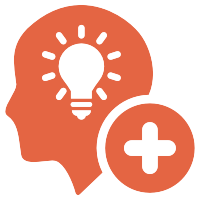
Zgłoś swój pomysł
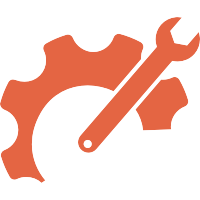
Pracuj z nami podczas fazy akceleracyjnej

Zaprezentuj swój projekt na Demo Day!
Zasady akceleracji
Plan rozwoju
Nie wszystkie zespoły przetrwają.
Budżetowanie i raportowanie
Wdrożenia testowe
PLN dla każdego z 20 zespołów
zespołów w jednej fazie akceleracyjnej
mentorów międzynarodowych
wyzwań - problemów do rozwiązania
Mentorzy nadchodzącej edycji

Katerina Lengold
Wiceprezes ds. Sprzedaży w Astro Digital i współzałożycielka CEO ImageAiry – pierwszego marketplace dla danych satelitarnych.
Przedsiębiorca, ekspertka sektora kosmicznego. Laureatka Top-100 Innovators (2014) i Leader of Tomorrow (2017)
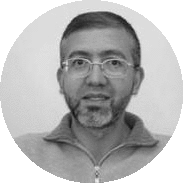
Giovanni Laneve
Uniwersytet ‘La Sapienza’ w Rzymie, SIA (Scuola di Ingegneria Aerospaziale), Earth Observation Satellite Images Applications Lab (EOSIAL). Ekspert z zakresu inżynierii lotniczej, przetwarzania obrazu i video.

Vladimir Lukin
National Aerospace University of Ukraine
Ekspert cyfrowego przetwarzania obrazu, przetwarzania sygnałów i teledetekcji

Sergey Stankevich
Ekspert w Scientific Centre for Aerospace Research
Specjalista w zakresie metod teledetekcji, analizy przestrzennej i oraz aplikacji wykorzystujących dane multi i hiperspektralne .

Magni Johannsson
Pracował przy projekcie samolotu orbitalnego Space Liner, obecnie zaangażowany w budowę ekosystemu startup-ów sektora kosmicznego w Europie. Współtwórca Disrupt Space i New Space facilitator.
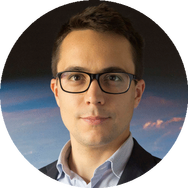
Lluc Diaz
Europejska Agencja Kosmiczna, Rhea Systems
Specjalista w dziedzinie modelowania biznesowego i finansowania projektów sektora kosmicznego.
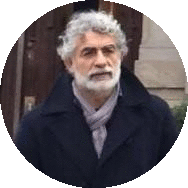
prof José Antonio Sobrino
Przewodniczący Hiszpańskiego Stowarzyszenia Teledetekcji. Uniwersytet w Walencji, Dyrektor Global Change Unit.
Ekspert z trzydziestoletnim doświadczeniem w rozwijaniu algorytmów procesowania obrazu, pomiarów in situ, zdalnych odczytach termicznych, pomiarów temperatury powierzchni ziemi i emisyjności.
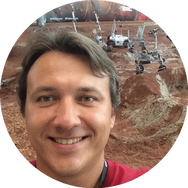
Maciej Urbanowicz
Założyciel MURB Space, wywodzący si z Politechniki Warszawskiej doświadczony inżynier specjalizujący się w m.in. w zagadnieniach związanych z konstrukcją satelitów, koordynator projektu oraz główny mechanik i inżynier systemowy PW Sat (pierwszy polski satelita, wyniesiony na orbitę 2012.02.13)

Marcin Zagórski
Partner w Black Pearls VC
Manager i doradca z ponad 25 letnim doświadczeniem w zarządzaniu finansowym, rozwoju startupów i globalnym skalowaniu innowacyjnych przedsiębiorstw technologicznych.
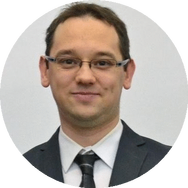
Paweł Gora
Programista m. in. w Microsoft, Google, CERN, IBM Research z doświadczeniem m.in. w obszarze sztucznej inteligencji i inteligentnych systemów transportowych. Lider projektów badawczych dot. m.in. miejsc parkingowych na MOP-ach oraz symulacji i optymalizacji transportu w dużej skali.
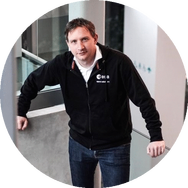
Martijn Leinweber
Community Manager w Space Business Innovation Centre Noordwijk
Ekspert z międzynarodowym doświadczeniem w zarządzaniu społecznościami, wsparciu biznesowym, marketingu i komunikacji.

Martyna Gatkowska
Zastępca Kierownika Centrum Teledetekcji, Instytut Geodezji i Kartografii w Warszawie
Project Manager, z doświadczeniem w realizacji projektów Europejskiej Agencji Kosmicznej
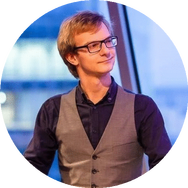
Mateusz Kraiński
Europejska Agencja Kosmiczna, Inżynier Robotyki
Zaangażowany mówca z pasją do nauczania. Od kilku lat aktywny członek Toastmasters International i mentor w programach akceleracyjnych dla startupów.

Michal Sobolewski
Mechanik-konstruktor branży lotniczej i kosmicznej, zaangażowany w projekty polskie i zagraniczne, specjalizujący się w kosmicznych mechanizmach zwalniających oraz strukturach kompozytowych.

Maciej Kwapiński
Blue Dot Solutions, założyciel KWCopter.
Specjalizue się w Bezzałogowych Systemach Latających
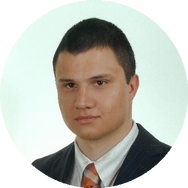
Jan Musiał
Adiunkt w Instytucie Geodezji i Kartografii, Centrum Teledetekcji. Specjalista w zakresie wykorzystania danych satelitarnych do analiz meteorologicznych, klimatycznych oraz rolnictwa.

Radosław Kubryń
Starszy Inżynier w OPEGIEKA Sp. z o.o.
Doświadczony programista i administrator rozwiązań IT

Piotr Wołejsza
Prezes w Sup4Nav LLC (twórca systemu NAVDEC)
Kapitan żeglugi wielkiej z 15 letnim stażem na morzu, doktor nauk technicznych w dziedzinie geodezji i kartografii.
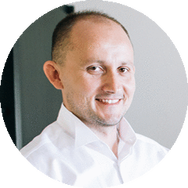
Krzysztof Bruniecki
Adiunkt na Wydział Elektroniki, Telekomunikacji i Informatyki, Politechniki Gdańskiej.
Zajmuje się projektowaniem, tworzeniem i optymalizacją systemów informatycznych w obszarach związanych z geoinformatyką (GIS), nawigacją (w tym satelitarną), lotniczym i satelitarnym obrazowaniem Ziemi oraz programowaniem urządzeń mobilnych.

Juha Ruohonen
Wcześniej był zaangażowany w kilka szybko rozwijających się przedsięwzięć, które jako startupy VC celowały w zdobycie rynku globalnego. Są to firmy takie jak: Supponor, Eniram, HyperIn, Instream Engineering i Epicrystals. Łączna kapitalizacja tych spółek przekracza 20 mln euro.

Mateusz Kusznierewicz
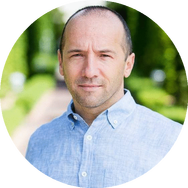
Maciej Winiarek
Przedsiębiorca, edukator, trener, tutor. Certyfikowany trener TOC (Level 4). Dyrektor TOCFE INC na Polskę. Od 14 lat prowadzi własną firmę edukacyjną. Współzałożyciel Niepublicznego Gimnazjum “Thinking Zone”. Prelegent i trener podczas konferencji i szkoleń w USA, Japonii, Niemiec, Peru.
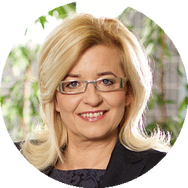
Małgorzata Tobiszewska
Ekspertka w obszarze Team Building, Human Resources oraz budowania i rozwoju kompetencji biznesowych, managerka z 28-letnim stażem w branżach produkcyjnych, usługowych i doradczych

Jacek Barzowski

Bartłomiej Glinka

Marcin Kowalik

Tomasz Woźniak
Swój pierwszy startup (mp3.pl) założył w 1996 r. Członek zarządu funduszu, który zainwestował kilkanaście milionów złotych w przedsięwzięcia z wielu dziedzin (m.in. płatności mobilne, eko-energia, retail, e-commerce, hardware, biotechnologie)
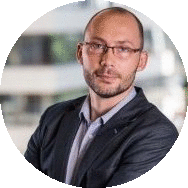
Dariusz Zaremba
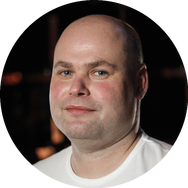
Mike Bradshaw

Piotr Bucki

Jarmo Kuusivuori

Paweł Dąbrowski

Katarzyna Sidło
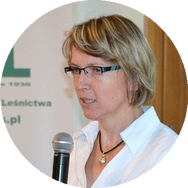
Agata Hościło

José Manuel Delgado Blasco

Rob Posterna
Zapewnia zrównoważony przegląd dostępnych technologii kosmicznych, ekspert z zakresu świadczenia usług i ustalania modeli biznesowych, jak również ekonomicznej oceny możliwości biznesowych.
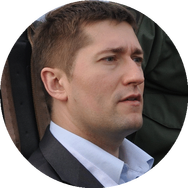
Krzysztof Kanawka
Krzysztof jest CEO Blue Dot Solutions i doradcą naukowym Black Pearls VC. Lider albo uczestnik wielu projektów sektora kosmicznego. Jego doświadczenie obejmuje współpracę z GNSS, ESA i GSA.

Nicola Musgrove

Adam Dąbrowski

Jakub Ryzenko
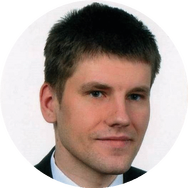
Mariusz Kacprzak
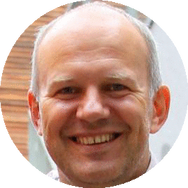
Andrus Kurvits

José Manuel Delgado Blasco

Kartik Kumar
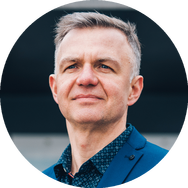
Tomasz Nadolny
Korzyści
Kryteria oceny – czego oczekujemy od Zespołów?
Gotowy prototyp lub przynajmniej MVP
Przedsiębiorcy
Znajomość technologii downstream sektora kosmicznego
Realne rozwiązania realnych problemów
Zespół
Ocena aplikacji
Wyzwania
Partnerzy Space3ac poszukują rozwiązań odpowiadających na ich konkretne potrzeby i zdefiniowali je w formie wyzwań. Autorzy wyzwań chętnie przetestują wygenerowane w trakcie akceleracji wczesne wersje rozwiązań i będą zainteresowani wdrożeniem ich wersji ostatecznych.
FAQ
Do kogo adresowany jest Space3ac?
Czy musi się zgłosić cały zespół?
Jaki jest koszt uczestnictwa?
Gdzie odbywa się akceleracja?
Mamy już dofinansowanie naszej działalności z innych źródeł. Czy to problem?
Space3ac Intermodal Transportation – harmonogram
Luty 2017 – otwarcie fazy aplikacyjnej
30 Kwietnia 2017 – koniec fazy aplikacyjnej
Maj 2017 – Preparation Camp
Czerwiec – Sierpień 2017 – Faza Akceleracyjna
Wrzesień 2017 – Demo Day z inwestorami i rozpoczęcie naboru do drugiej rundy projektu
Space3ac Newsletter
By clicking „Subscribe” you agree to processing of personal data provided by you for the purpose of sending you the SPACE3AC email by Pomorska Specjana Strefa Ekonomiczna Sp. z o.o., Sopot (80-703), Władysława IV, registered in the Register of Entrepreneurs of the National Court Register under the number 0000033744, NIP (Tax ID No.): 588-00-19-192, REGON (Business ID No.): 190315182 who is at the same time the personal data administrator in the meaning of the Act of 29 August, 1997 on Personal Data Protection.

